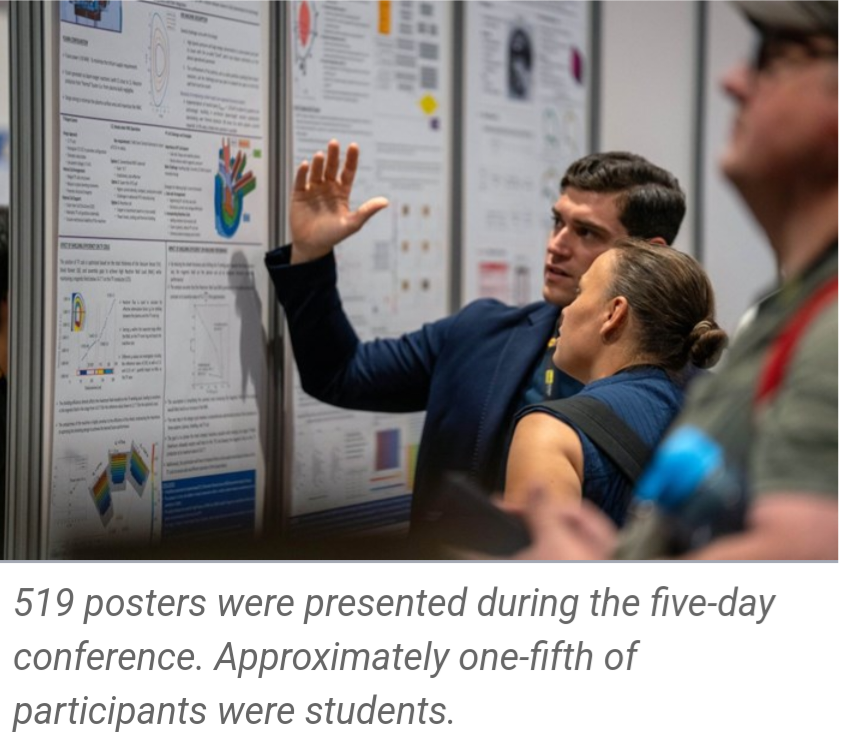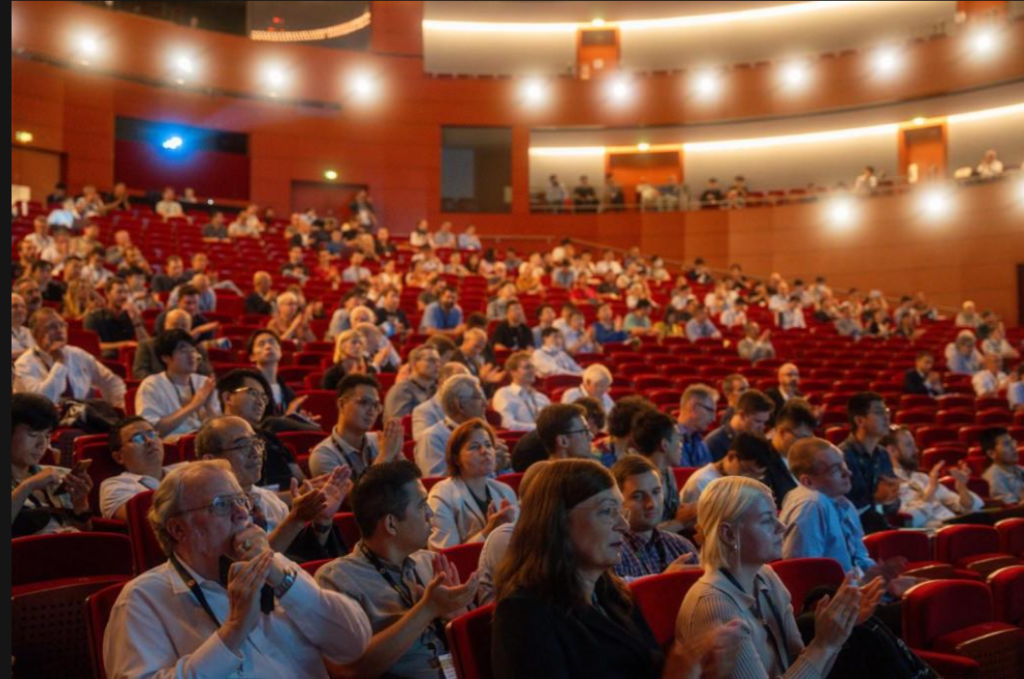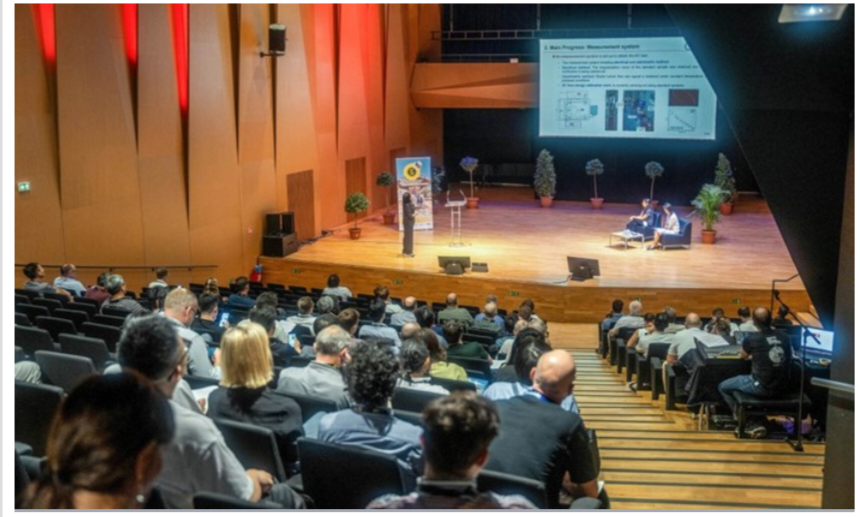The cultural heart of Aix-en-Provence, France, became the week-long base camp for the world’s largest gathering of magnet specialists. For the first time in its nearly 60-year history, the conference introduced special topical sessions and plenaries of interest to a wider audience.
SUPERCONDUCTING MAGNETS AS A CATALYST. MT-28 Conference.
By, Sabina Griffith.
Many passers-by paused for a moment and picked up their cell phones to capture the scene. It was indeed rare to see dancers on the square outside of the Pavillon Noir—home to the Ballet Preljocaj in Aix-en-Provence. The dancers had abandoned their natural habitat because the iconic black cube had become, for one week, centre stage for the world’s largest gathering of specialist in magnet technologies.
Nearly 1,000 scientists and engineers convened for the 28th International Conference on Magnet Technology (MT-28) from 10 to 15 September to share the latest advances in magnets for medical applications, high energy physics, transport and aviation, decarbonization projects, and—last but not least—fusion energy. The conference was co-hosted by the ITER Organization and the French Alternative Energies and Atomic Energy Commission (CEA).
A status report on ITER, delivered by ITER Deputy Director-General for Science and Technology Yutaka Kamada, marked the opening of the 28th Conference; five days later it was closed with a special forum on “alternative paths to commercial fusion.” Gianfranco Federici, head of the Fusion Technology Department at EUROfusion, read down the “to do” list for fusion to succeed (“every machine after ITER must produce tritium”) and challenged the “smaller, faster, cheaper” approach of some of the private fusion startups. Federici also stressed the importance of ITER and its key goal: to produce a burning plasma (“without that we can go home!”) Co-panelist Dennis Whyte, director of the MIT Plasma Science & Fusion Center (PSFC) insisted that one of the key drivers for commercial fusion deployment would be the price per kilowatt-hour. PSFC is currently collaborating with the private start-up Commonwealth Fusion Systems on a compact high-field tokamak called SPARC.

For the first time in its history (see box), the conference introduced special topical sessions and plenaries of interest to a wider audience. Denis Le Bihan for example, the French founder of NeuroSpin (CEA Saclay) which is dedicated to the study of the human brain by magnetic resonance imaging, explained how the whole-body 11.7 T Iseult magnet is helping to better understand and even treat certain neurological or psychiatric conditions such as Alzheimer’s disease, epilepsy, and schizophrenia.
A bit of history.
The Magnet Technology conference series started in 1965, in Stanford, California; a second followed in 1967 in Oxford (United Kingdom). The conference was originally orientated towards high energy physics and accelerator magnets. MT-1 had one paper on fusion out of about 75 submitted; by 1970 there were three papers on fusion out of about 100 with a copper magnet design for the Wendelstein 7 stellarator. The first tokamak magnet papers appeared in 1972.
In the early years, the conference did not occur on a regular basis. By the 1990s, the conference had developed a tradition of rotating between Asia, the United States and Europe and occurring every two years. The first Asian conference was Tsukuba in Japan (1989), followed by Beijing (1997).
By the 2000s the conference papers were about 25% fusion related, 25% high energy physics, 25% medical imaging and 25% power engineering, with a heavy bias towards superconducting magnets.
At the most recent MT-28, 730 papers were presented and 400 to 500 submissions for publication in IEEE Transactions of Applied Superconductivity are expected. The distribution of papers by origin at this recent conference was Europe: 257, China: 170, USA: 117, Japan: 93, Korea: 69.
An entire morning session was dedicated to the question how superconducting technology can hasten carbon neutrality. Sataro Yamaguchi, from Chubu University in Japan, thinks that the share of hydropower within Japan’s energy mix could increase from the current 5 percent to 40 percent using superconducting storage technology. Other special sessions were dedicated to growing networks—for example Women in Fusion and the newly formed Superconductor Global Alliance (ScGA). Mike Lamont, director of Accelerators and Technology at CERN, sketched out the requirements for the next generation of particle accelerators.
In an extensive industrial exhibition, 43 companies from around the world presented applications in superconductivity as wells as new superconductor concepts, with much of the debate focused on the performance and commercial readiness of high-temperature superconductors such as rare-earth barium copper oxide (ReBCO). Once more, fusion could be the catalyst for advances in this field, an exhibitor said.
And with the conference venue located only 30 kilometres south of the ITER site, more than 500 participants took the chance to see the ITER construction site and the project’s impressive magnets with their own eyes.





